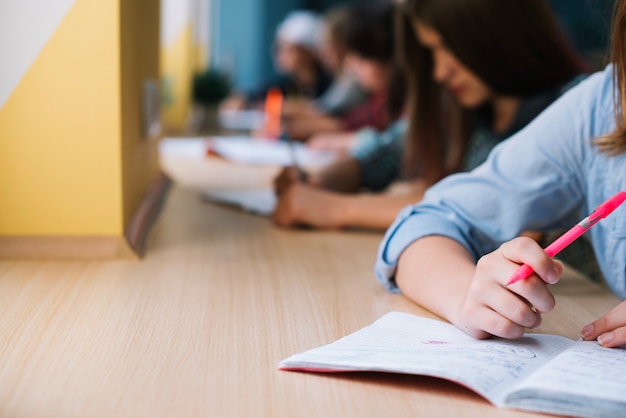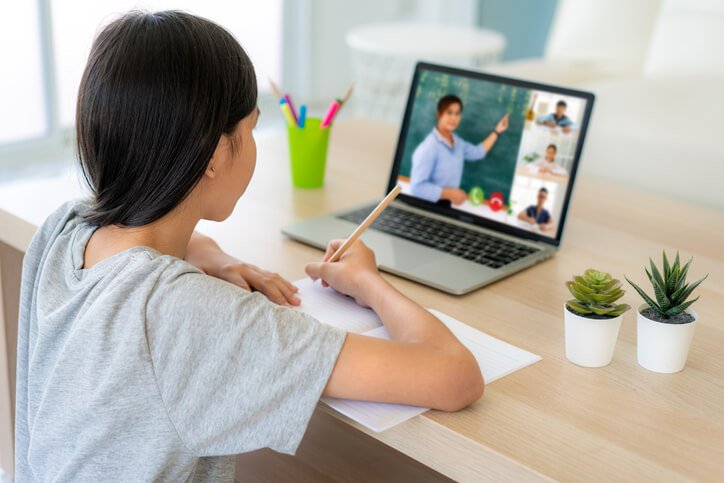
Blended Learning Techniques & Advantages
Are you hearing a lot about blended learning in recent times? Blended learning is a hybrid education system involving face-to-face training and online sessions. It is also called by various names like mixed-mode instruction, technology-mediated instruction, and hybrid learning. The basic idea of b-learning is to find out the right session mix to benefit better.
Advantages of Blended Learning (H1)
Blended learning will be successful if individuals identify the right mix and match. Research states that combining both methods is more effective as it increases motivation amongst students. Therefore, cbse schools in chennai like Babaji Vidhyashram School are now incorporating blended learning into their curriculum.
Physical classrooms- Better Interaction
A physical classroom with face-to-face training will facilitate better interaction. Students and staff find it easier to connect. Transmitting knowledge is more effective in the physical world. Furthermore, organizing tasks, encouraging teamwork, and providing personal attention are efficient only in a physical classroom scenario.
Online sessions- Greater Flexibility
Online sessions offer great flexibility. Children can use their free time to finish their chores. Videos, slides, texts, and audio files can be used to share information easily. The learning method costs less as the course contents do not require a hard copy.
Four Models of B-learning (H2)
When discussing blended learning, it is important to have in-depth knowledge about the four models. They are the rotation, enriched virtual, flex, and a la carte models. Staffs work according to the needs of students and decide on which model to use. Igcse schools in Chennai like international Village School implement two models together or create unique strategies for better results
Rotation Model
The most popular model is rotation, where students rotate between various learning activities. Here, children from a single class will only take part. A few examples of in-class physical activities of a rotation model include:
- Peer group interaction
- Independent study time
- One-on-one interaction with the staff
- Teacher-led session
Subdivisions in a rotation model are:

- Lab rotation
- Flip classroom
- Station rotation
- Individual rotation
As its name suggests, lab rotation takes place for lab activities in a single classroom. A flipped classroom is when children learn independently away from school. They can gain knowledge through online lectures. In rare situations, the learning happens independently in a classroom, without a teacher’s guidance. Station rotation is rotating amongst learning activities for a scheduled time. individual rotation is more like a personalized rotation activity. Based on the daily schedule, a student will rotate only a few activities depending on their needs.
Flex Model
A student learns primarily at the school campus with challenging subjects and topics. The rest of the curriculum teaching takes place online. Students in the flex model benefit well as they learn at their own pace.
A La Carte Model
In an A La Carte model, students can choose courses they want to learn online or through physical sessions. It can be inside or outside the school. It is mostly seen among children of higher grades. A La Carte model can either be an extra language or subjects not available in the school curriculum.
Enriched Virtual Model
An enriched virtual model lets students spend time online. Students take in-person sessions with the teacher. Online learning is fundamental in this model. But it is different from full-time virtual schooling. Face-to-face learning is compulsory. Witnessing the benefits, full-time virtual schools are transitioning to this model.
The Takeaway
The omnipresence of mobile phones has changed the teaching and learning methodology. Blended Learning is becoming popular with the advent of e-learning and new technology. It is making students more flexible, active, and efficient. After various research and analysis, we can conclude that the best solution is a combination of online and offline learning systems.






















